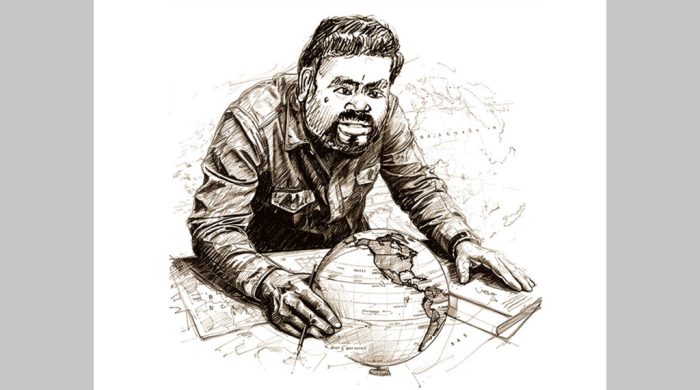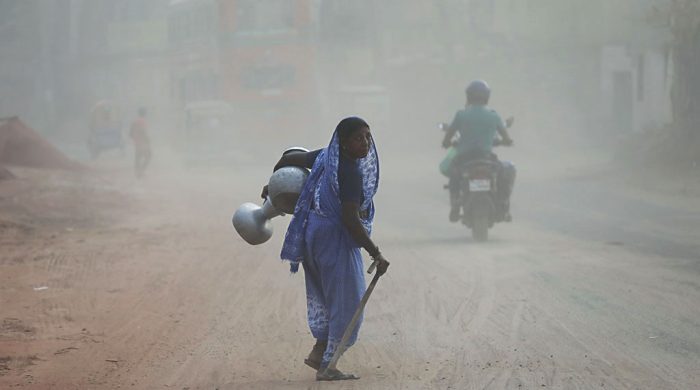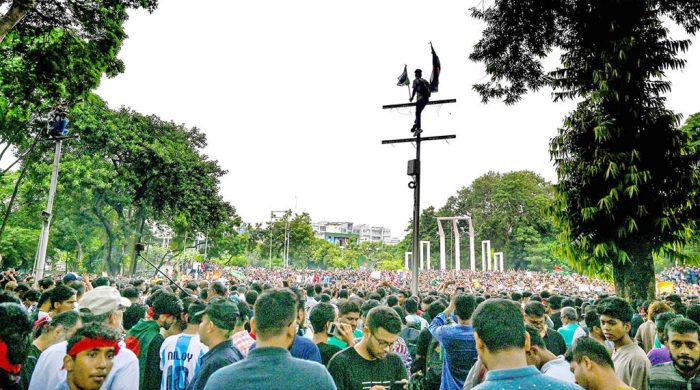Nepal Offers a Lifetime Experience, That’s Not Enough Once

- Update Time : Wednesday, November 24, 2021
- 130 Time View

Global tourism industry is one of the largest industry in the world. It incorporates many industries, including lodging, transport, attractions, travel companies, and more. In its broadest sense, tourism means to travel and stay in places outside of their usual environment for leisure, business, health, or other reasons. Recently, the global patterns of people travelling either domestically or internationally have been greatly disrupted by the impact of the Covid-19 pandemic. Before the pandemic, in 2019, the Travel and Tourism sector contributed to 10.4 % of the global GDP. In 2020, the share has dropped to 5.5% due to ongoing international travel restrictions. The Travel & Tourism sector suffered a loss of almost US$4.5 trillion to reach US$4.7 trillion in 2020, with the contribution to GDP dropping by a staggering 49.1% compared to 2019; relative to a 3.7% GDP decline of the global economy in 2020.
Comparable impacts were seen in the south Asian region as total contribution of Travel and Tourism to GDP dropped 36.5 % from 6.6% in 2019 to 4.4% of the total economy in 2020. Also, contribution of regional tourism to employment skewed to negative 20.2 % with around 9.6 million (direct and indirect association) layoffs during the pandemic. The region saw a decline of 25.4 Billion USD in terms of spending habits of visitors.
Similarly, in 2019, total contribution of Travel & Tourism to GDP of Nepal was 6.7% (USD 2089.0 MN) of the total economy. This share declined to 3.6 % (USD 1114.7MN) of the total economy in 2020. In the same time period around 200 thousand tourism related jobs were lost in Nepal.
With relaxation in travels restrictions in last few months, Nepal tourism sector opens up and is ready to welcome tourists from all over the world and South Asia and Bangladesh in particular remains unique market given the special relations and proximity.
Nepal and Bangladesh have traversed a long way since the establishment of diplomatic relations between the two countries in 1972. Bilateral relations have remained remarkably smooth. Nonetheless, Nepal and Bangladesh find themselves far from utilizing the enormous potential for developing mutually beneficial cooperation in the potential fields of Water Resources, Trade, Energy cooperation, Ecology and Environment partnership, Transit and Connectivity, etc.
Equally, tourism is one of the potential sector that is under-explored. This can be validated by the fact that, in 1990 only 1404 tourist travelled to Nepal. A decade later in 2000, the number increased to 9,262. In 2018, close to 27,000 tourists from Bangladesh visited Nepal. The data shows that, the number of tourists from Bangladesh has remain at par low given the proximity and number of potential visitors.
Covid-19 pandemic have bred a new kind of travelers who are averse to long flights and to journeys planned in advance. The story is same for travel enthusiasts in Bangladesh. They favor affordable destination for vacations and R&R. Given the travel restrictions to Thailand and Singapore for tourism purpose, tourists from Bangladesh may look to visit Nepal. The wide range of tourism products offered by the industry in Nepal will offer a lifetime experience, that’s not enough once. Nepal has been well branded as a destination of nature, culture and adventure. And, that holds true among the Bangladeshi people as well. Nepal’s vibrant landscape can offer a wider experience of travel and tourism. Classically, Nepal had been the stronghold of tourism. Straight from the hippie era to today’s millennials Nepal’s charm as a tourism destination is ever rising.
Nepal offers affordable vacations, a last minute preparation (given the proliferation of internet in our lives) is sufficient to take you to the mesmerizing sunrise in Nagarkot and relaxing sunset in lakeside Pokhara. The habit of holiday travel is deeply rooted in Bangladesh, and markets in Nepal are remarkably resilient to their needs. Likewise, Nepali travelers could be attracted to visit the Buddhist sites of pilgrimage in Bangladesh combined with visits to the seaside attractions at Cox Bazaar, the world’s longest sea coastline.

In general terms tourism can be categorized in two aspects – Sun lust and wanderlust tourism. The former is motivated by desire to rest, relax along the sea, sun and sand. On the other hand, wanderlust tourism focus on travelling and experiencing diverse cultures and people. Given the unique experience Nepal offers because of its diversity in nature and culture, Nepal tourism offers an opportunity to wanderlust in its wilderness and adventure activities. The southern plains for safari, mid hills for adventures and luxury, high mountains for trekking and mountaineering.
Major adventure products, include trekking along the Himalaya trail, Hiking and mountaineering expeditions, rafting, kayaking, Canoeing, mountain flights and ultralight flights. It also offers bird watching, paragliding, jungle safari, zip line and bungee jumping in the deep ravines. For most of the Bangladeshi people, mid hills of Nepal are the center of attraction. Millennials and Gen X /Z from urban Bangladesh are taking up trekking as well. And needless to say, Nepal is home to world-renowned trekking trails, where Bangladeshi foothold is slowly increasing. Due to affordability and comfort in trekking, Nepali a just an hour flight away, is a must go destination for trekking. Likewise, increasing luxury hotels around Mid-Hills like Kathmandu, Nagarkot, Pokhara, Bandipur is seen as greater acceptance to the middle class of South Asia and specially the burgeoning upper middle class of Bangladesh. With properties dedicated to tourism, homestays to luxury resorts are at disposal for any traveler. South Asian travelers are very much considerate about properties and hotels they choose so good hotels are available at a much affordable rate.
Meetings, Incentives, Conferences, and Exhibitions (MICE) Tourism in Nepal is gaining popularity for corporate meeting planners; meetings and convention departments of hotels, food and beverage managers; logistics firms; private tour operators and transfer companies; incentive houses; professional trade organizations; tourism boards, tourism trade associations and travel-selling professionals in the Himalayan country with perfect weather and reasonable cost for event management. Unique attributes and attractions of Kathmandu, Pokhara, Chitwan, Lumbini and Janakpur offers options for MICE tourism in Nepal fire up the imagination of the delegates with exclusive pre or post tour programs especially designed to suit the budget and their penchant and interests.
In recent times, direct flights between the two countries has only helped to enhance people-to-people and cross-culture understanding. Bangladesh national carrier; Biman Bangladesh has direct flight in Dhaka-Kathmandu-Dhaka sector on every Monday and Thursday; and Himalaya Airlines operates on Kathmandu-Dhaka-Kathmandu segment on Sundays and Wednesdays. There has been developments in road connectivity in Nepal and the south Asian region. With enforcement of BIN in due course of time, sub-regional connectivity will make driving from Bangladesh to Nepal an exciting journey. Currently, tourists from Southern India, 2000 KM away drive their way to experience and wanderlust in Nepal’s wilderness and participate in adventure activities. Moreover, Nepal offers on arrival land port entry visa for visitors.
With western hotel chains flocking in Nepal, their primary targets are large MICE groups from this region. Concept of Sea, Sand and Sun of tourism is constantly evolving to sustainability and rural tourism, where Nepal has been the leader of this cause of tourism. Similarly, Nepal do have to offer unique cultural experience, visibly the switch of language and culture with geographical region. Nepal has a peculiar culture and food habit making her a touristic potential or the reason to travel Nepal for the South Asians friends.
Efforts have been to revive the tourism cooperation with recently concluded high level visit from either sides. In March 2021, the Government of Bangladesh and Government of Nepal signed memorandum of understanding on tourism cooperation. The objective is to further promote friendly relations, with a conviction that tourism interlinks different segments of society and will be a key sector for economic development across all strata of way of life, history and culture in the two countries.
The upcoming sales mission on 23rd November 2021, in Bangladesh organized by Nepal Tourism Board (NTB) in collaboration and partnership with (Nepal Association of Tours and Travel Agents (NATTA) is focused to increase the arrivals from Bangladesh, and increase the length of stay to experience the more diverse tourism products for Bangladeshi friends. The interactions between travel agents from both the countries also calls for improving the investment climate, encourage foreign investment and promote public-private partnership in improving tourism infrastructure and sustainable tourism products for lifetime experience.
The writers are: Ranjan Yadav , Second Secretary, Embassy of Nepal in Dhaka & Sagar Shrestha, Tourism Officer, Nepal Tourism Board



















